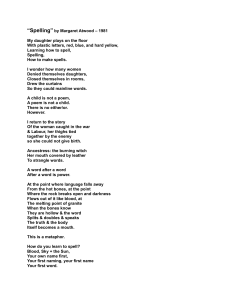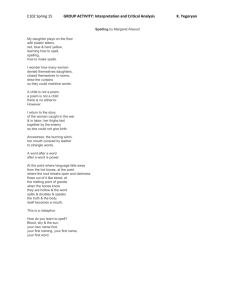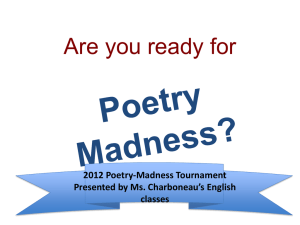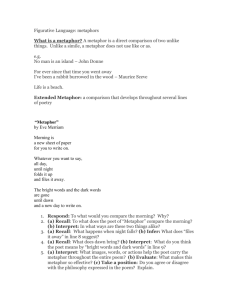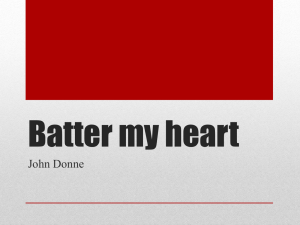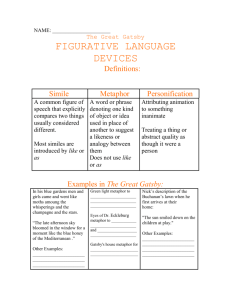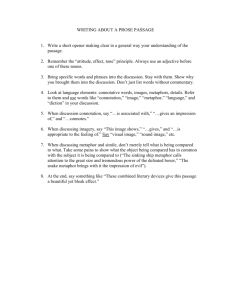Decontrusting “Spelling” by Margaret Atwood 1. Examine the title of
advertisement
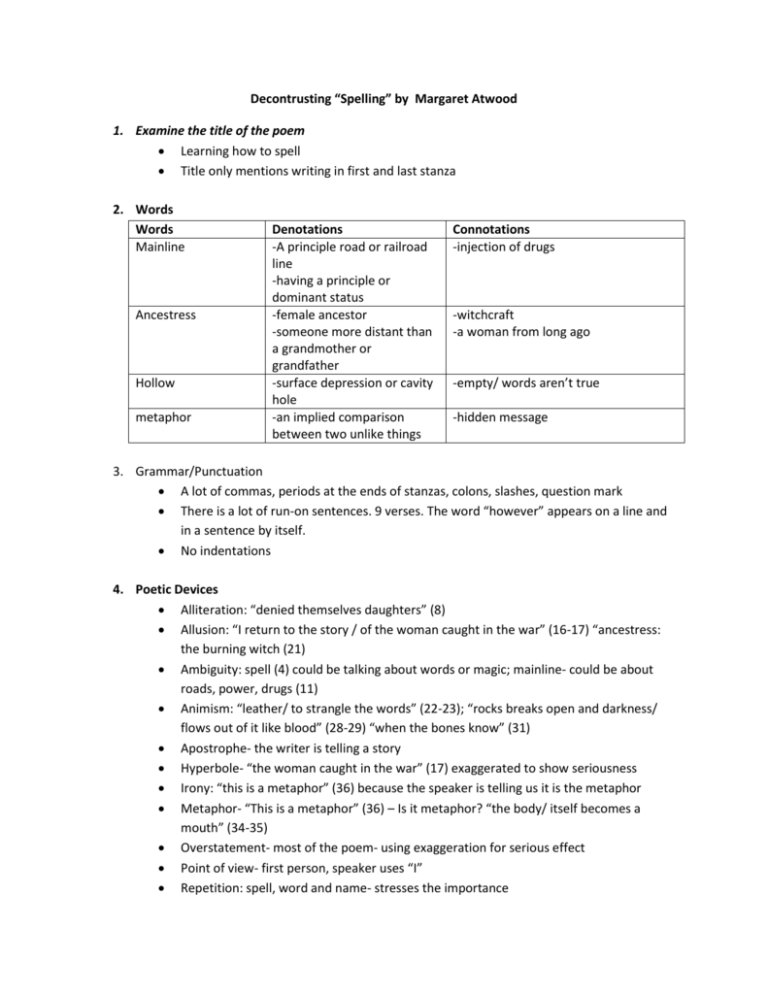
Decontrusting “Spelling” by Margaret Atwood 1. Examine the title of the poem Learning how to spell Title only mentions writing in first and last stanza 2. Words Words Mainline Ancestress Hollow metaphor Denotations -A principle road or railroad line -having a principle or dominant status -female ancestor -someone more distant than a grandmother or grandfather -surface depression or cavity hole -an implied comparison between two unlike things Connotations -injection of drugs -witchcraft -a woman from long ago -empty/ words aren’t true -hidden message 3. Grammar/Punctuation A lot of commas, periods at the ends of stanzas, colons, slashes, question mark There is a lot of run-on sentences. 9 verses. The word “however” appears on a line and in a sentence by itself. No indentations 4. Poetic Devices Alliteration: “denied themselves daughters” (8) Allusion: “I return to the story / of the woman caught in the war” (16-17) “ancestress: the burning witch (21) Ambiguity: spell (4) could be talking about words or magic; mainline- could be about roads, power, drugs (11) Animism: “leather/ to strangle the words” (22-23); “rocks breaks open and darkness/ flows out of it like blood” (28-29) “when the bones know” (31) Apostrophe- the writer is telling a story Hyperbole- “the woman caught in the war” (17) exaggerated to show seriousness Irony: “this is a metaphor” (36) because the speaker is telling us it is the metaphor Metaphor- “This is a metaphor” (36) – Is it metaphor? “the body/ itself becomes a mouth” (34-35) Overstatement- most of the poem- using exaggeration for serious effect Point of view- first person, speaker uses “I” Repetition: spell, word and name- stresses the importance Verbal irony- when she says hollow bones, she’s not really talking about the bones Simile: “rocks breaks open and darkness/ flows out of it like blood” (28-29) Synecdoche- “bones know”- the bones represent people Stanzas- there are 9 Speaker- is a storyteller Symbols- “the woman caught in the war” (17)- represent struggles in the past “the ancestress: burning witch” (21) represent struggles women had in the past; “plastic letters” represent language 5. Paraphrase Her daughter plays on the floor with colored plastic letters making words. Wonder how many women concealed themselves from their own world and others. A poem and a child are not the same thing. They are similarities. But… She is at war with her enemy and with herself. Witches who were burned at the stake, not being allowed to speak. Words have powerful meaning. When a person can’t voice their opinion, they finally crack and say it anyway. And others twist your words, but in the end, the truth comes out. This is a hidden meaning. Learning to spell easy words first such as your name. 6. Tone & Mood a. Tone- she’s questioning the past. Words, language are/ is important to the speaker in the poem. b. Mood- it goes from happy to dark and sad. 7. Reexamine title. The poem spells out the story of how women didn’t always have a voice. That being able to have your own voice is very important.
